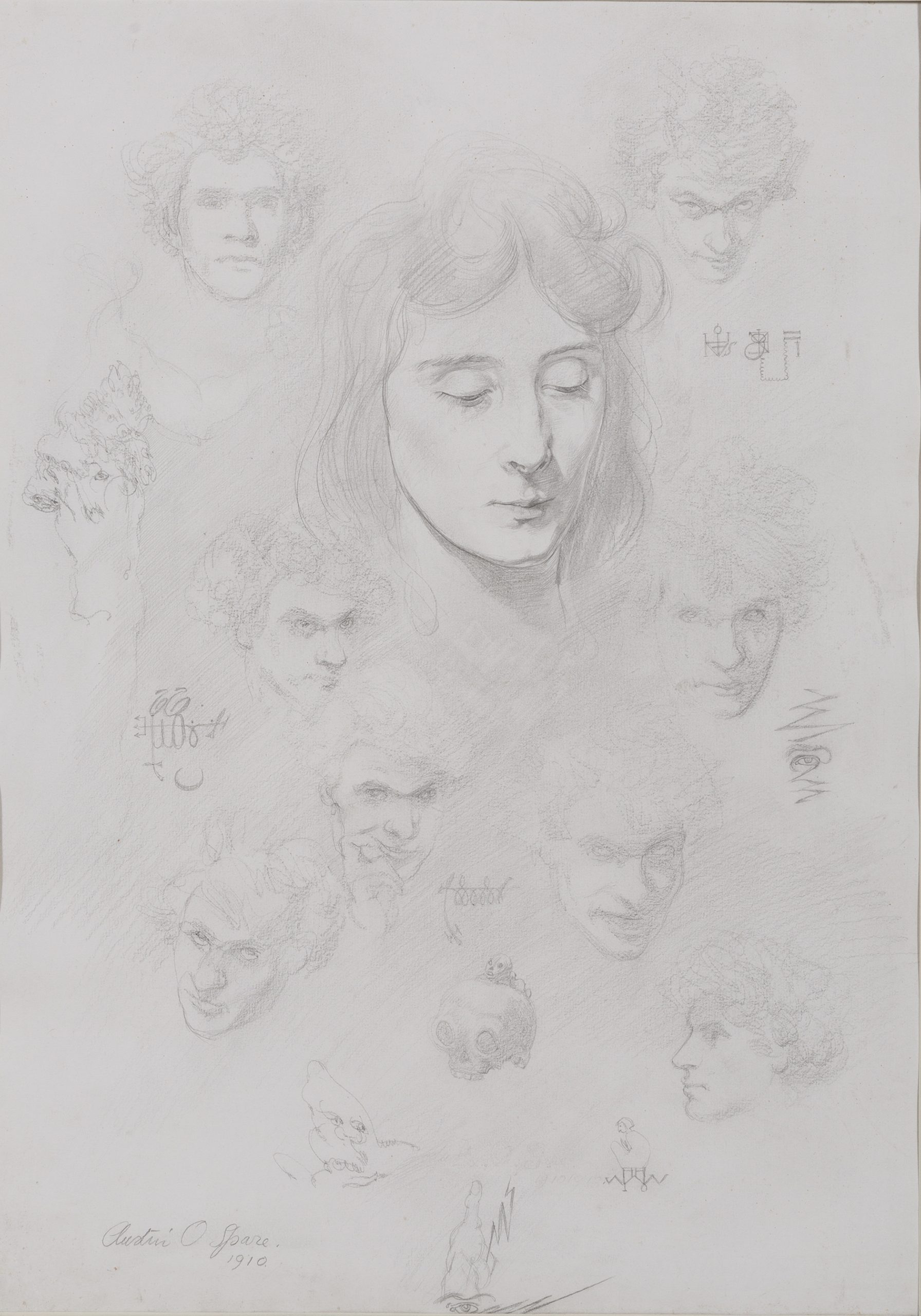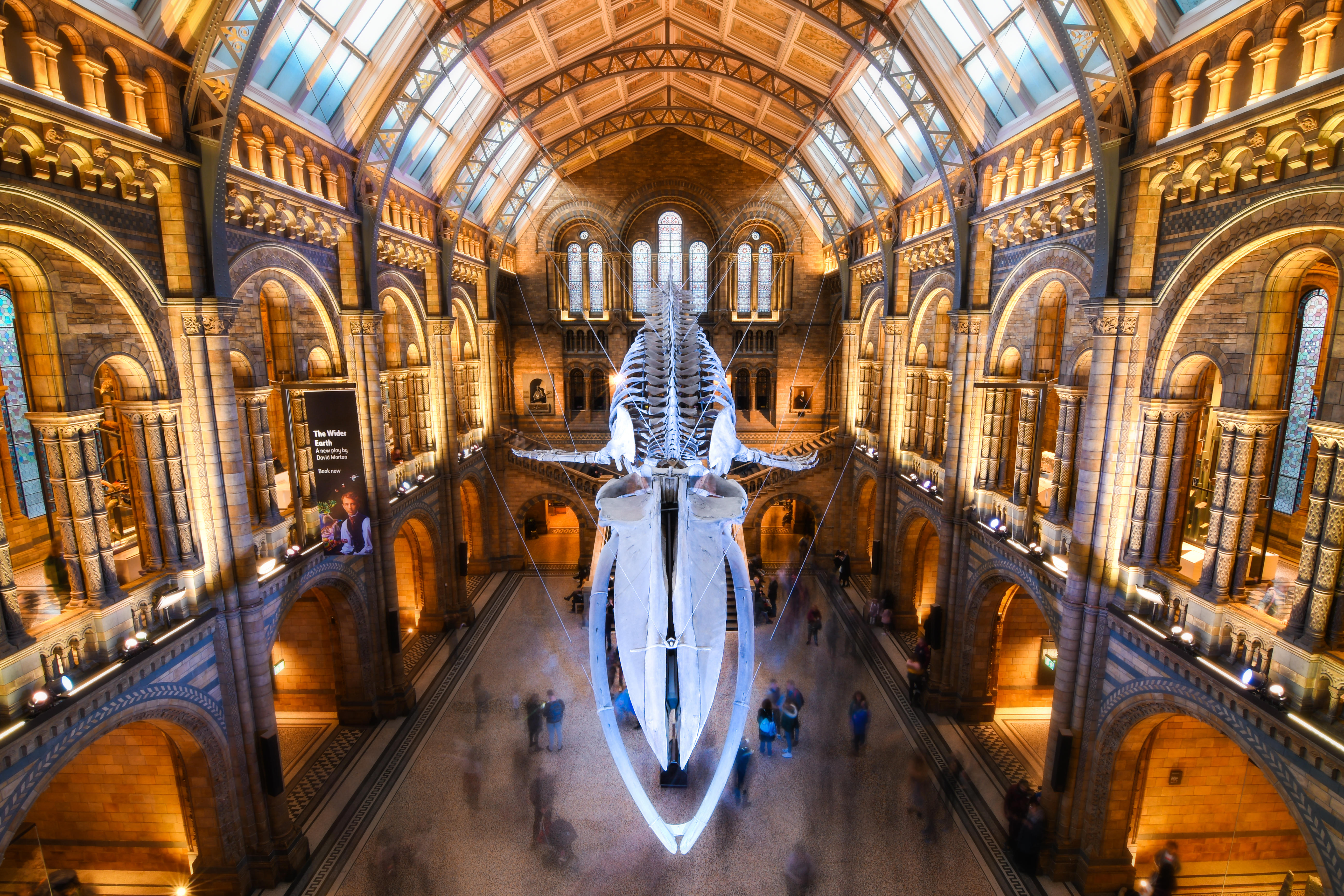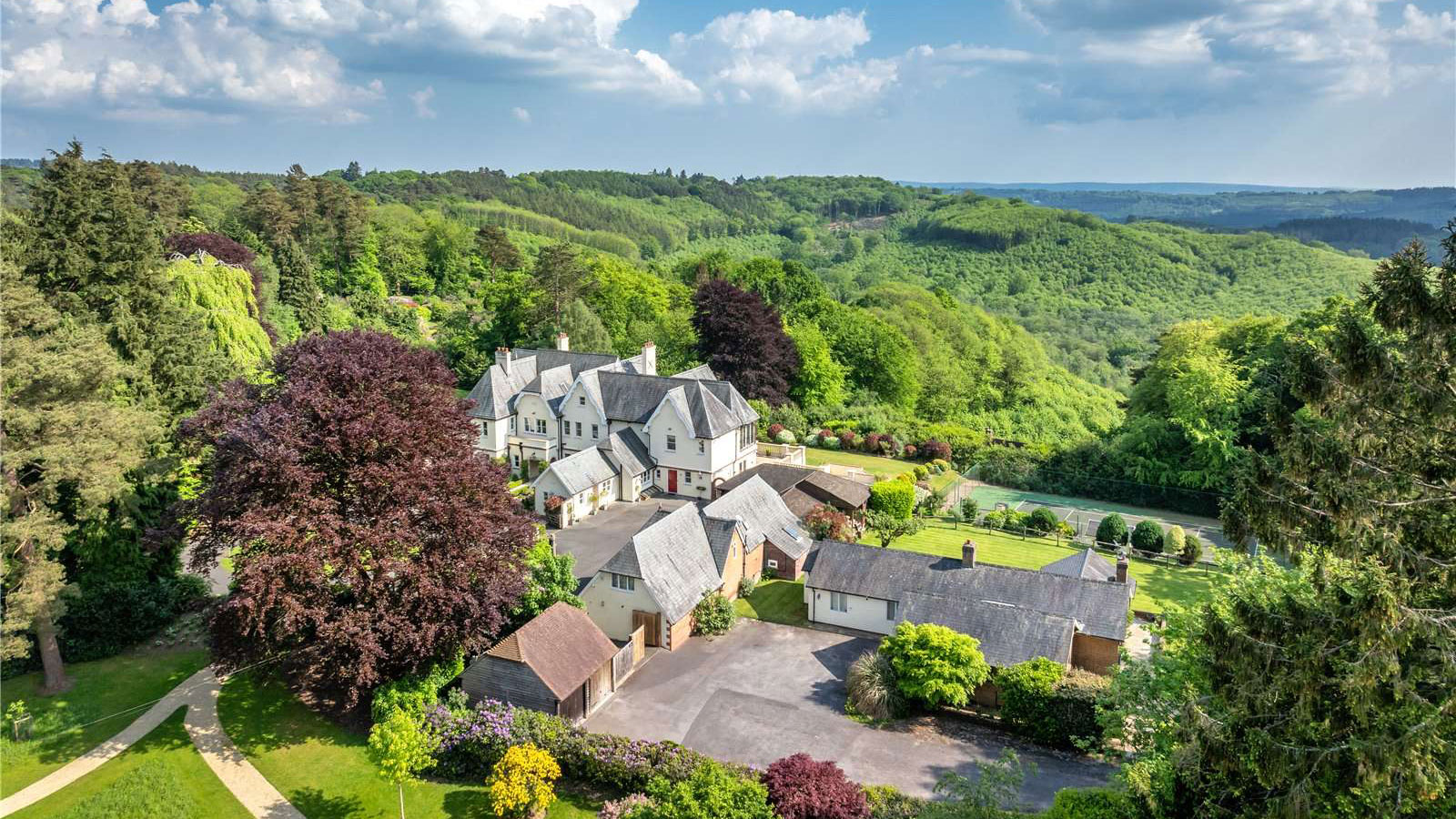My Favourite Painting: Viktor Wynd
Artist and collector Viktor Wynd chooses a haunting picture by Austin Osman Spare.


Viktor Wynd on A Love Spell by Austin Osman Spare
My obsession with Spare dates back to a party at Jimmy Page’s Tower House in the early 2000s, when I was blown away by a brooding 1927 self-portrait hanging in the loo. When I brought this drawing proudly home and propped it up in my bedroom, my lover awoke in the middle of the night to find the devil at the end of our bed, improbably sticking his tongue out. Since then, it has dominated the collection of his work in my museum.
Spare was a peerless draughtsman, hailed as the New Michelangelo. This is, I think, one of his finest drawings and I find it hard to believe that a mere mortal such as I should own such a master-piece. For me, it evokes boundless love and longing, together with great beauty, although I’m not blind to the magical powers of the spells evoked by the surrounding sigils .
Artist Viktor Wynd is proprietor of the Viktor Wynd Museum of Curiosities. His new book, ‘The UnNatural History Museum’, is out on March 5.
John McEwen analyses A Love Spell
Austin Osman Spare’s father was a City of London policeman. As a High Anglican schoolboy, Austin was seduced by an elderly woman known as Witch Patterson, who claimed descent from the 17th-century Salem witches and taught him magic.
He attended evening art classes at Lambeth School of Art, was talent spotted and received a scholarship to the Royal College of Art. There, he rejected Christianity for occultism and wrote and published his first grimoire (spells and invocations), Earth Inferno, one of whose buyers was his fellow student and friend, the future suffragette Sylvia Pankhurst.
In 1904, he was one of the youngest artists ever selected for the Royal Academy’s Summer Exhibition. His first major exhibition, ‘Black and White Drawings’ of 1907, was described in the journal The World as ‘stupendous and terrifying in its creative flow of impossible horrors’.
Shortly after this, he met a woman in a Mayfair pub eager to marry off her beautiful daughter Eily, already a single mother. Spare obliged and they wed the year after he made this drawing. Eily’s beatific head is surrounded by a deliberately magical number of impish, sometimes even menacing, self-portraits interspersed with sigils (magical symbols) to do with love.
Sign up for the Country Life Newsletter
Exquisite houses, the beauty of Nature, and how to get the most from your life, straight to your inbox.
The drawing is the centrepiece of ‘The Spare Room’ in The Viktor Wynd Museum of Curiosities, Fine Art & UnNatural History & Cocktail Bar, 11, Mare Street, London E8, the only permanent public display of Spare’s art. It shows why he earned the highest praise from the likes of G. F. Watts, Sargent and Augustus John.
Country Life is unlike any other magazine: the only glossy weekly on the newsstand and the only magazine that has been guest-edited by HRH The King not once, but twice. It is a celebration of modern rural life and all its diverse joys and pleasures — that was first published in Queen Victoria's Diamond Jubilee year. Our eclectic mixture of witty and informative content — from the most up-to-date property news and commentary and a coveted glimpse inside some of the UK's best houses and gardens, to gardening, the arts and interior design, written by experts in their field — still cannot be found in print or online, anywhere else.
-
 Athena: We need to get serious about saving our museums
Athena: We need to get serious about saving our museumsThe government announced that museums ‘can now apply for £20 million of funding to invest in their future’ last week. But will this be enough?
By Country Life
-
 Six rural properties with space, charm and endless views, as seen in Country Life
Six rural properties with space, charm and endless views, as seen in Country LifeWe take a look at some of the best houses to come to the market via Country Life in the past week.
By Toby Keel
-
 'As a child I wanted to snuggle up with the dogs and be part of it': Alexia Robinson chooses her favourite painting
'As a child I wanted to snuggle up with the dogs and be part of it': Alexia Robinson chooses her favourite paintingAlexia Robinson, founder of Love British Food, chooses an Edwin Landseer classic.
By Charlotte Mullins
-
 The Pre-Raphaelite painter who swapped 'willowy, nubile women' for stained glass — and created some of the best examples in Britain
The Pre-Raphaelite painter who swapped 'willowy, nubile women' for stained glass — and created some of the best examples in BritainThe painter Edward Burne-Jones turned from paint to glass for much of his career. James Hughes, director of the Victorian Society, chooses a glass masterpiece by Burne-Jones as his favourite 'painting'.
By Charlotte Mullins
-
 'I can’t look away. I’m captivated': The painter who takes years over each portrait, with the only guarantee being that it won't look like the subject
'I can’t look away. I’m captivated': The painter who takes years over each portrait, with the only guarantee being that it won't look like the subjectFor Country Life's My Favourite Painting slot, the writer Emily Howes chooses a work by a daring and challenging artist: Frank Auerbach.
By Toby Keel
-
 My Favourite Painting: Rob Houchen
My Favourite Painting: Rob HouchenThe actor Rob Houchen chooses a bold and challenging Egon Schiele work.
By Charlotte Mullins
-
 My Favourite Painting: Jeremy Clarkson
My Favourite Painting: Jeremy Clarkson'That's why this is my favourite painting. Because it invites you to imagine'
By Charlotte Mullins
-
 The chair of the National Gallery names his favourite from among the 2,300 masterpieces — and it will come as a bit of a shock
The chair of the National Gallery names his favourite from among the 2,300 masterpieces — and it will come as a bit of a shockAs the National Gallery turns 200, the chair of its board of trustees, John Booth, chooses his favourite painting.
By Toby Keel
-
 'A wonderful reminder of what the countryside could and should be': The 200-year-old watercolour of a world fast disappearing
'A wonderful reminder of what the countryside could and should be': The 200-year-old watercolour of a world fast disappearingChristopher Price of the Rare Breed Survival Trust on the bucolic beauty of The Magic Apple Tree by Samuel Palmer, which he nominates as his favourite painting.
By Charlotte Mullins
-
 My favourite painting: Andrew Graham-Dixon
My favourite painting: Andrew Graham-Dixon'Lesson Number One: it’s the pictures that baffle and tantalise you that stay in the mind forever .'
By Country Life